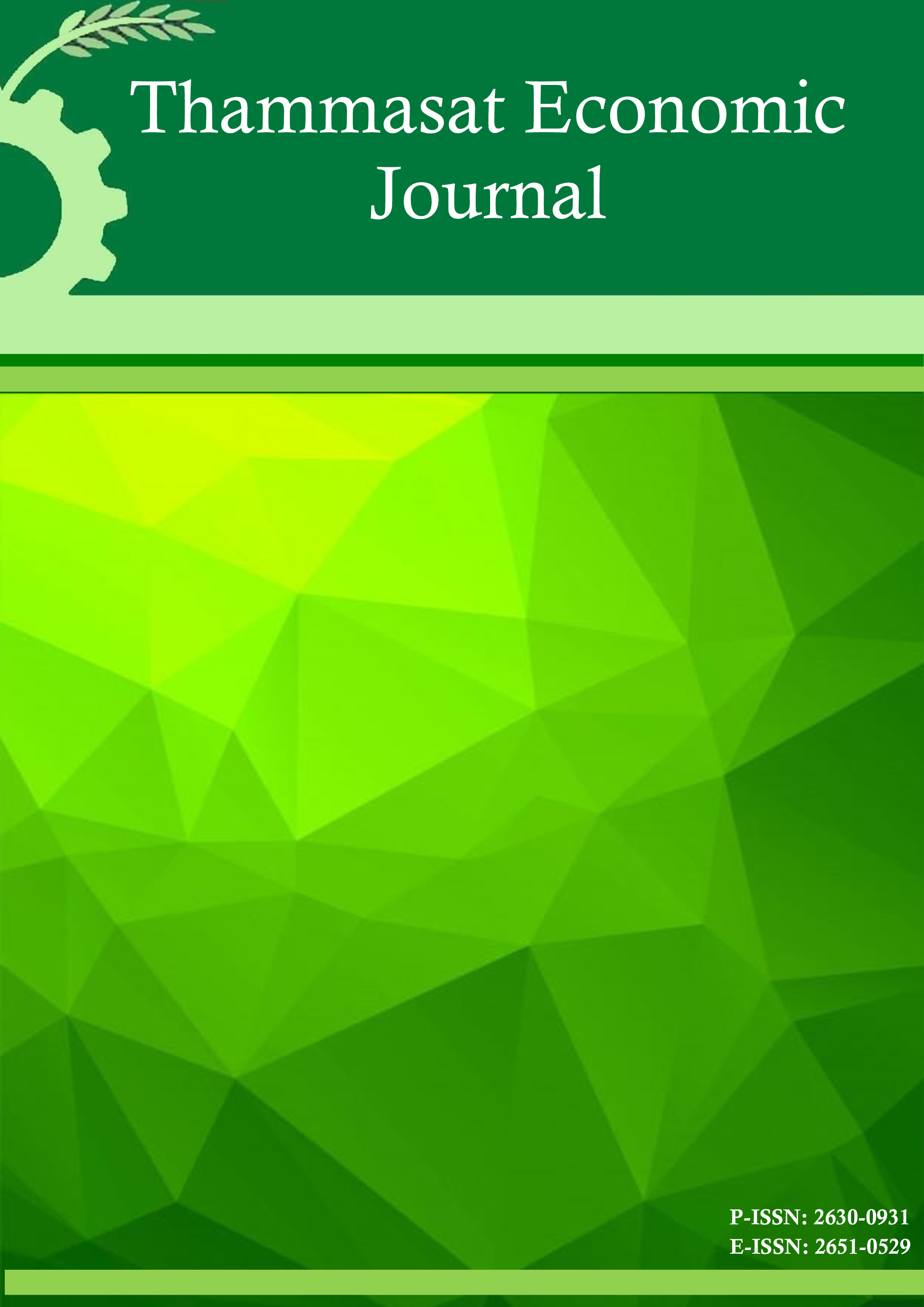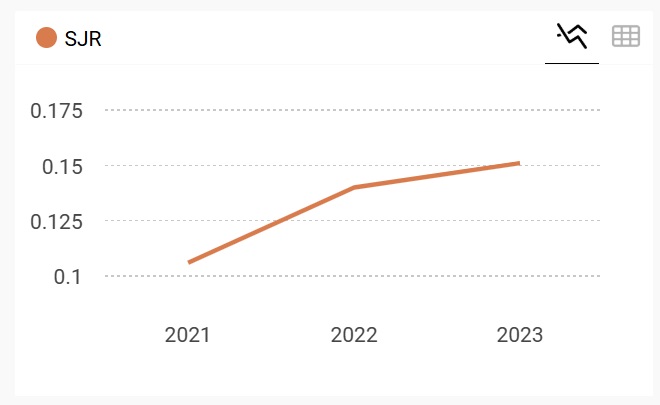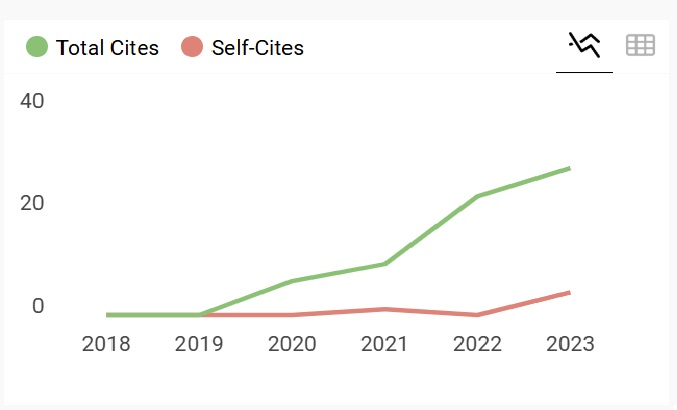A Time-Varying Duration-Dependence Test for Rational, Speculative Bubbles for Thailand’s Stock Market
Keywords:
Rational Bubbles, Time-Varying Duration Dependence Tests, Thailand’s Stock MarketAbstract
The study extends the popular duration dependence test and applies it to test for rational, speculative bubbles in Thailand’s stock market.
The extension is important because it allows duration dependence to be non-monotone and be able to vary with the levels of bubbles as well as economic
and financial variables. A non-monotone, time-varying duration dependence specification is new and made possible by applying a Cox proportional hazard
function together with a Generalized-Weibull baseline function. Using the SET index return data, the study finds that rational speculative bubbles exist in
Thailand’s stock market. The duration dependence is monotone decreasing and varies with the levels of bubbles and other economic and financial
variables such as bank loans, money supply and capital inflows.
References
2.Allen, F., & Carletti, E., 2010, An overview of the crisis: Causes, consequences and solutions , International Review of Finance 10, 1-26.
3.Blanchard, O. J. & Watson, M.W. (1984) Bubbles, rational expectation, and financial markets, in Crisis in the Economic and Financial System, P. Wachtel (ed.) (Massachusetts: Lexington Books).
4.Box, G. E. P. & Cox, D. R. (1964) An analysis of transformations, Journal of the Royal Statistical Society, Series B 26, pp. 211-243.
5.Brannas, K. (1984) Omitted variables in a Weibull regression model, Economics Letters 16, pp. 279-283.
6.Brooks, C. & Katsaris, A. (2003) Regime switching models of speculative bubbles with volume: An empirical investigation of the S&P 500 Composite Index, Working Paper, ISMA Center, University of Reading, U.K.
7.Brooks, C. & Katsaris, A. (2005) Trading rules from forecasting the collapse of speculative bubbles for the S&P 500 Composite Index, Journal of Business 78, pp. 2003-2036.
8.Chan, K., McQueen, G. & Thorley, S. (1998) Are there speculative bubbles in Asian stock markets?, Pacific-Basin Finance Journal 6, pp. 125-151.
9.Cox, D. R. (1972) Regression models and life tables, Journal of the Royal Statistical Society, Series B 34, pp. 187-220.
10.Cunado, J., Gil-Alana, L., & F. de Gracia, 2005, A test for rational bubbles in the NASDAQ stock index: A fractionally integrated approach, Journal of Banking and Finance 29, 2633-2654.
11.Diba, B. T., & Grossman, H. I. (1987) On the inception of rational bubbles, Quarterly Journal of Economics 102, pp. 697-700.
12.Elbers, C. & Ridder, G. (1982) True and spurious duration dependence: The identifiability of the proportional hazard model, Review of Economic Studies 49, pp. 403-409.
13.Evans, G. W. (1986) A test for speculative bubbles in the Sterling Dollar exchange rate: 1981-1984, American Economic Review 76, pp. 621-636.
14.Grimshaw, S., McDonald, J., McQueen, G. & Thorley, S. (2002) Testing for duration dependence with discrete data, Proceedings of the 2002 Business and Economics, Joint Statistical Meetings-Business and Economic Statistics Sessions Section, American Statistical Association, pp. 1263-1268.
15.Harman, Y. S. & Zuehlke, T. W. (2005) Applying an alternative test of duration dependence to the analysis of speculative bubbles, in Advances in Financial Planning and Forecasting 1, L. C. Few (Ed.) (Connecticut:JAI Press).
16.Jaradat, M. A. (2009) An empirical investigation of rational speculative bubbles in the Jordanian stock market: A nonparametric approach, International Management Review 5, pp. 92-97.
17.Jirasakuldech, B., Emekter, R. & Rao, R. P. (2008) Do Thai stock prices deviate from fundamental values?, Pacific-Basin Finance Journal 16, 298-315.
18.Kindleberger, C. P. (1989) Manias, Panics and Crashes: A History of Financial Crises (London: McMillan).
19.Lim J. Y. (1999) The macroeconomics of the East Asian crisis and the implications of the crisis for
macroeconomic theory, The Manchester School 67, pp. 428-459.
20.McQueen, G. & Thorley, S. (1994), Bubbles, stock returns, and duration dependence, Journal of Financial and Quantitative Analysis 29, pp. 394-401.
21.Scheinkman, J. A. & Xiong, W. (2003) Overconfidence and speculative bubbles, Journal of Political Economy 111, pp. 1183-1219.
22.Shiller, R. J. (1978) Rational expectations and the dynamic structure of macroeconomic models: A critical review, Journal of Monetary Economics 5, pp. 1-44.
23.Shumway, T. (2001) Forecasting bankruptcy more accurately: A simple hazard model, Journal of Business 74, pp. 101-124.
24.Sornette, D., & Zhou, W. (2004) Evidence of fueling of the 2000 new economy bubble by foreign capital inflow: Implications for the future of the US economy and its stock market, Physica A 332, pp. 412-440.
25.Van Norden, S., & Schaller, H. (1993) The predictability of stock market regime: Evidence from the Toronto Stock Exchange, Review of Economics and Statistics 75, pp. 505-510.
26.Watanapalachaikul, S., & Islam, S. M. N. (2007) Rational speculative bubbles in the Thai stock market: Econometric tests and implication, Review of Pacific Basin Financial Markets and Policies 10, pp. 1-13.
27.Weil, P. (1990) On the possibility of price decreasing bubbles, Econometrica 58, pp. 1467-1474.









